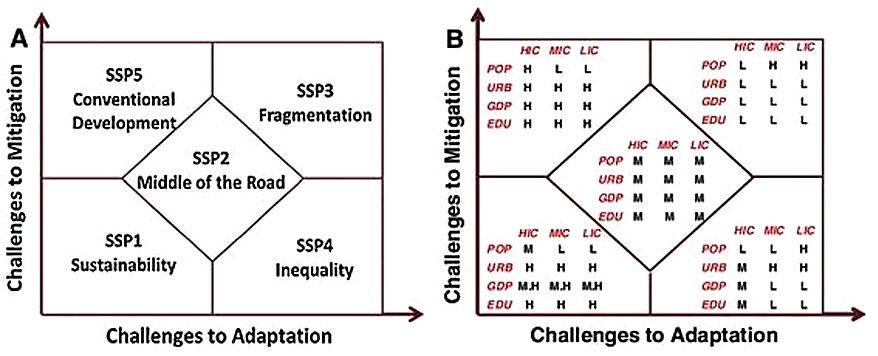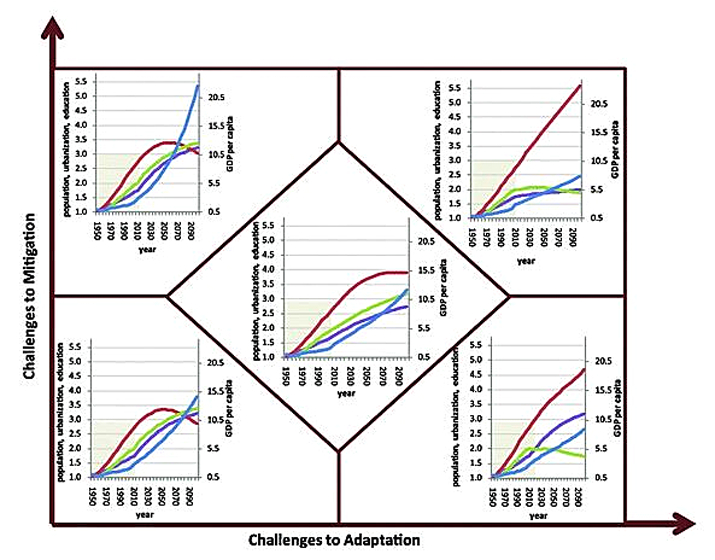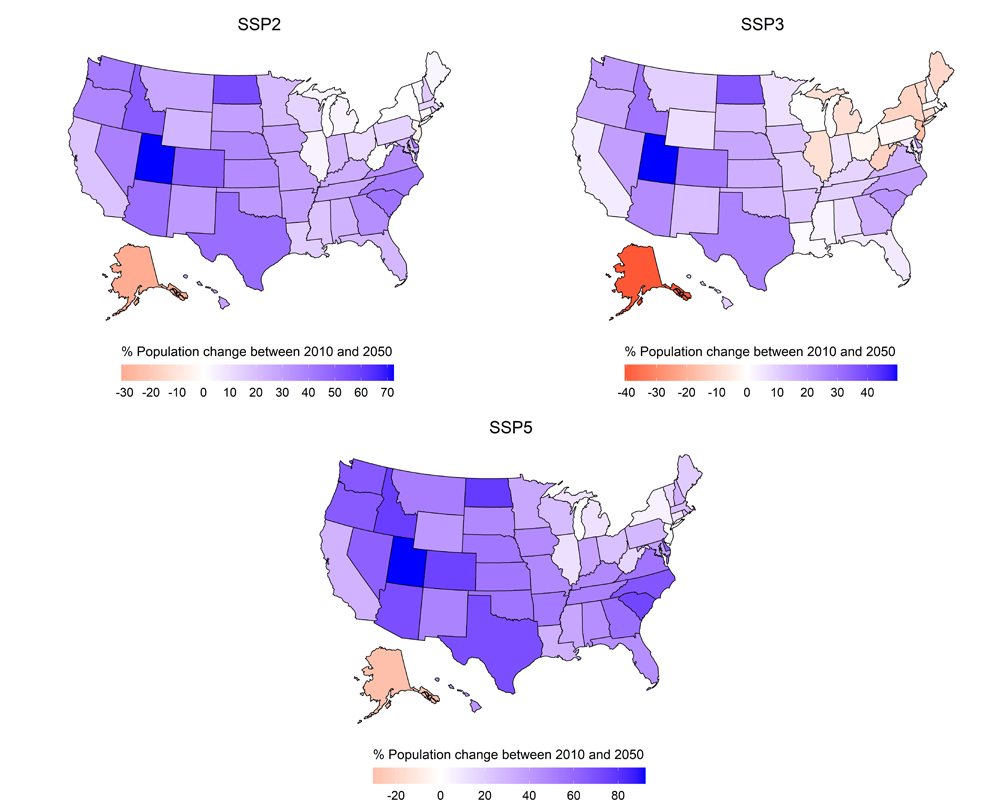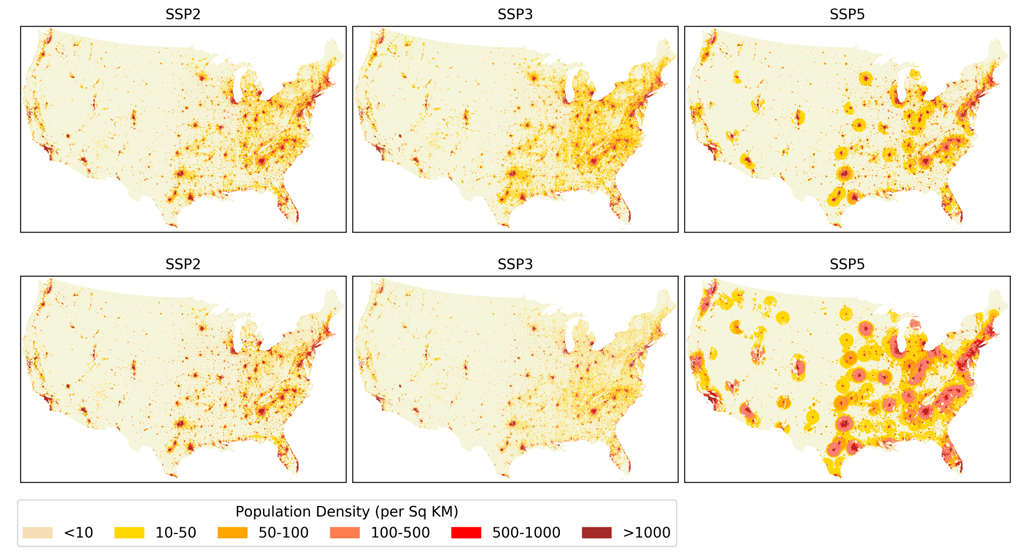Scenarios: Shared Socioeconomic Pathways (SSPs)
The Community Demographic Model (CDM) provides analytic tools for evaluating the impact of short- and long-term strategies and policies on demographic, socioeconomic, and environmental development pathways.
Shared Socioeconomic Pathways
Shared Socioeconomic Pathways (SSPs) examine how global society, demographics, and economics might change over the next century. CDM aligns with the most recent socioeconomic scenarios of the Intergovernmental Panel on Climate Change (IPCC).
The IPCC’s five SSPs span a wide range of possible future global development pathways and describe trends in demographics, human development, economy, lifestyle, policies and institutions, technology, and environmental and natural resources. The projection results are publicly accessible at the SSPs database hosted by the International Institute for Applied System Analysis (IIASA).
Researchers in the Population Council’s initiative on Population, Environmental Risks, and the Climate Crisis (PERCC) were particularly instrumental in providing urbanization projections as a core element of the SSPs for all countries.
Scenarios
The SSPs are based on five narratives outlining socioeconomic trends that could shape future society.
SSP1 Sustainability: A world of sustainability-focused growth and equality (Low challenges to mitigation and adaptation)
SSP2 Middle of the Road: A world where trends follow historical patterns (Medium challenges to mitigation and adaptation)
SSP3 Fragmentation: A world of resurgent nationalism and conflict (High challenges to mitigation and adaptation)
SSP4 Inequality: A world with ever-increasing inequality (Low challenges to mitigation and High challenges to adaptation)
SSP5: Conventional development: A world of unconstrained and rapid growth in economic development and energy use (High challenges to mitigation and Low challenges to adaptation)
To demonstrate the application of the CDM in developing scenarios for human-environment interactions, we present here a series of demographic projections under the framework of the SSPs.
Figure 1

Figure 1. Qualitative narratives of the SSPs (left) and their assumptions on central elements for countries by income (right). The central elements are population (POP), urbanization (URB), GDP, and education (EDU); the income groups are High Income Countries (HIC), Medium Income Countries (MIC), and Low Income Countries (LIC); assumptions on future changes are High (H), Medium High (M.H), Medium (M), and Low (L).
Figure 2
Figure 2 displays the projected global trends from 1950 onwards under each SSP, aggregated from the national projections.

Figure 2. Historical and projected changes in global population (red), urbanization (purple), education (green), and economic growth (blue) under the SSPs relative to 1950.
The CDM has been used in ongoing efforts by climate change research communities to extend the baseline SSP scenarios to go beyond national level analysis and apply to subnational levels. One example is population changes under SSP2, SSP3, and SSP5 for US states (Figure 3) and their spatial distribution of population (Figure 4).
Moreover, similar approaches are being implemented for subnational territories of other countries. This enables the assessment of associations between population and environment in different geographic scales with distinct underlying socioeconomic and environmental conditions.
Figure 3
Figure 3. Comparison of relative population changes of US states from 2010 to 2050 under SSP2, SSP3, and SSP5.

Figure 4
Figure 4. Population projection grids for the contiguous United States according to SSP2, SSP3, and SSP5 in 2050 (top panels) and in 2100 (bottom panels).

